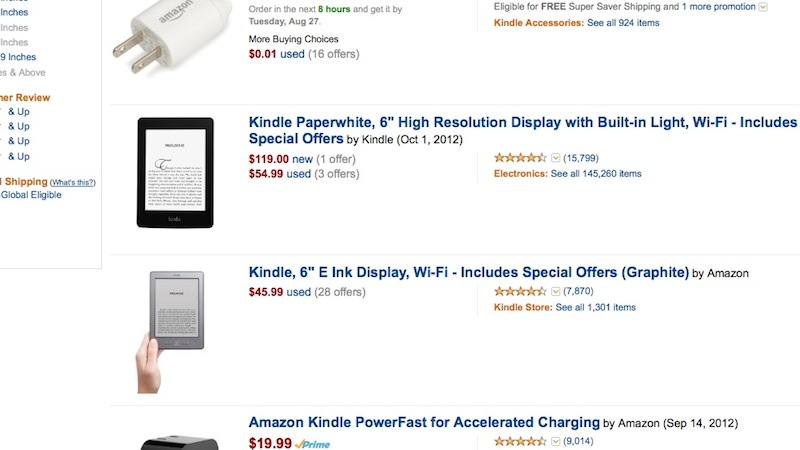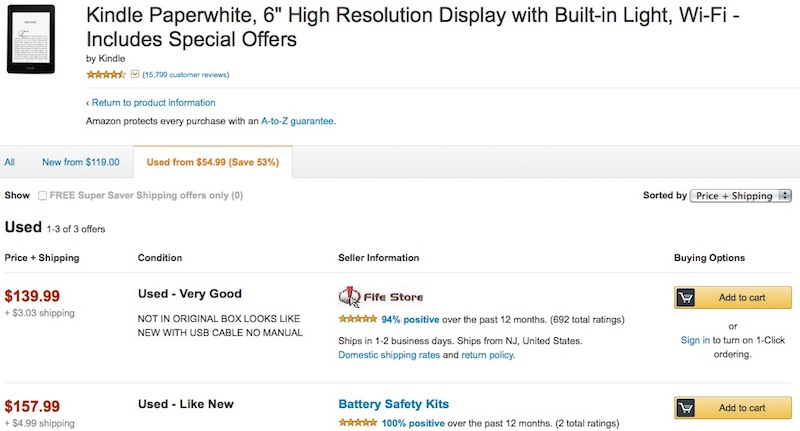So why is it that this juggernaut of perfection, scale, and engineering can't do a percentage or summarize a three-item list? Would you get into a vehicle whose celestial navigation systems have been engineered by a company that has trouble sorting a list of three?
I went searching for a Kindle today and found that outside of Amazon, on eBay for example, pickings are surprisingly slim. So on Amazon's website, I did a search for Kindles and within a mere 10.767s (!?) it returned some items. The first that meets my needs is a Kindle 'Paperwhite' device - Amazon showing me that there are three available for as little as $54.99 used. Good enough, I say! Let's get on with it then.
Clicking on the link (the word 'used' adjacent to the advertised $54.99 price in this case) takes me to another page with a short product description and availability displayed below as tabs. The puzzling thing is that the 'tab' currently highlighted optimistically announces "Used from $54.99 (Save 53%), yet the first item displayed from this list of three, sorting in ascending price order is $139.99, not including shipping.
Now, I hesitate to use the phrase It's not rocket-science, so I got to thinking about alternatives for this awfully sloppy and disorienting user-experience. The way I see it, there are four distinct possibilities here, and none flatter the implementers, unfortunately, but at least they provide some range of options to assign points of failure in their implementation:
- Bad batch management: the summary page - the gigantic array of hashes within hashes that represents search results, is decoupled from changing information, so that as stock is turned over, search results represent an older snapshot of stock than what is currently available. Sad.
- No snapshots: the search result representation of available stock is being generated continuously, such that the situation outlined above happens for small subsets of the data, but a single search can never range through an accurate representation of available stock/prices at a singular point in time. Likely, but does not explain the longevity of this inaccuracy (8 hours and counting as of Mon Aug 26 12:10:28 EDT 2013).
- Bubbling: the common practice of altering the markup or selectivity that targets me as opposed to you, or me on the first visit from me on the second visit. Google does this extensively with search results, and Amazon has to do it to some degree, but I don't think they are as sophisticated with it.
- Deliberate under-reporting of result price to suck you in, just in case you will decide the price must be rising fast, accept the higher than advertised price, not notice, or in any other way rationalize the bait-and-switch and click 'Buy' anyway.
No - it really looks as if the bait-and-switch presentation is the most likely explanation, which means once you're in one of those fancy Amazon rocket-ships to Mars you may find that the ticket price did not include oxygen for the trip, or worse, the navigational computations for the trip will routinely have 'accidental' errors in the neighborhood, optimistically, of 55.93/54.99... Curiously, the shortest distance between the earth and Mars is about 54.6M kilometers, so the spaceship might drop you off about 600,000 miles shy of Mars. Better hold your breath! In either case, not very confidence-inspiring.

